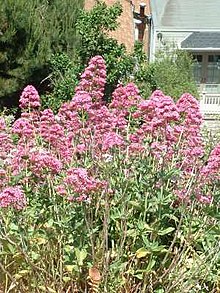Perennial plant

A perennial plant or perennial (Latin per, "through", annus, "year") is a plant that lives for more than two years. Herbaceous perennials are plants that do not form woody tissue and woody perennials are plants that develop a woody base or root system from which the foliage and flower stems grow. The term perennial more commonly describes herbaceous perennials, since woody plants (i.e., trees and shrubs) are always perennials. Perennials that flower and fruit only once and then die are termed monocarpic or semelparous. However, most perennials are polycarpic, flowering over many seasons in their lifetime.
In warmer and more clement climates, perennials grow continuously. In seasonal climates, their growth is limited to the growing season. For example, in temperate regions a perennial plant may grow and bloom during the warm part of the year, with the foliage dying back in the winter. These plants are deciduous perennials. Regrowth is from existing stem tissue. In many parts of the world, seasonality is expressed as wet and dry periods rather than warm and cold periods. In some species, perennials retain their foliage all year round; these are evergreen perennials.
With their roots protected below ground in the soil layer, perennial plants are notably tolerant of wildfire. They are also less subject to extremes of cold in temperate and arctic winters, with less sensitivity than trees or shrubs.
Perennial plants dominate many natural ecosystems on land and in fresh water, with only a very few (e.g. Zostera) occurring in shallow sea water. They are particularly dominant in conditions too fire-prone for trees and shrubs, e.g., most plants on prairies and steppes are perennials; they are also dominant on tundra too cold for tree growth. In forests, perennial plants are of secondary importance to trees and shrubs, but are often still abundant on the forest floor.
Perennial plants are usually better competitors than annual plants, especially under stable, resource-poor conditions. This is due to the development of larger root systems which can access water and soil nutrients deeper in the soil and to earlier emergence in the spring.
Examples of evergreen perennials include Begonia and banana.
Examples of deciduous perennials include goldenrod and mint.
Examples of monocarpic perennials include Agave and some species of Streptocarpus.
Attribution
- Some content on this page may previously have appeared on Wikipedia.